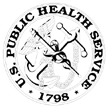

People from more than 150 sites around the country participated in the first live broadcast of a Healthy People 2000 progress review. Chaired by the Assistant Secretary for Health and Surgeon General, this second review of progress on Healthy People 2000 objectives for women was organized by the Public Health Service Office on Women’s Health and focused on premature mortality, morbidity, and reproductive health. With the support of the Health Resources and Services Administration, participants were linked via satellite transmission with viewers at remote sites who posed questions by telephone and FAX messages. This interactive discussion provided an opportunity to review what works in prevention and what more needs to be done. Of the 60 or more objectives that specifically target improved health for women, attention focused on the following:
2.3 The prevalence of overweight in all females aged 20-74 increased from 27 percent in the period 1976-80 to 37 percent in the period 1988-94. The year 2000 target is 20 percent. Over the same interval, the increase for black females aged 20-74 was from 44 percent to 52 percent. The target is 30 percent. Over-weight prevalence in Mexican-American females aged 20-74 increased from 39 percent in 1982-84 to 50 percent in the period 1988-1994. The target for Hispanic females aged 20 and over is 25 percent.
3.4 The rate of smoking among females declined from 27 percent of those aged 18 and over in 1987 to 23 percent in 1995. The year 2000 target is 15 percent. Over the same period, there was little change in smoking prevalence among females of reproductive age (18-44 years)—from 29 percent in 1987 to 28 percent in 1995. The target is 12 percent. Prevalence among pregnant females declined from 25 percent in 1985 to 18 percent in 1995 (target, 10 percent). Thirty-six percent of females who used oral contraceptives smoked in 1983, compared with 24 percent in 1995. The target is 10 percent.
5.1 For all females aged 15-17, the rate of live births declined from 38.7 per 1000 in 1991 to 36.0 in 1995. The decline was largest for black teenagers. U.S. teen births are still among the highest in developed countries.
5.2 Unintended pregnancy declined from 56 percent in 1988 to 49 percent in 1995. The year 2000 target is 30 percent. Over the same time span, rates for black females declined from 78 percent to 72 percent and for Hispanic females from 54.9 percent to 48 percent. The targets are 40 percent and 30 percent, respectively.
7.7 While the incidence of rape committed against females aged 12 and over has increased since 1986, the trend in more recent years has been downward. For females aged 12-34, the incidence
of rape increased from 250 per 100,000 in 1986 to 607 per 100,000 in 1992, then declined to 527 per 100,000 in 1994. The target is 225 per 100,000.
9.7 The incidence of hip fractures among white women 85 years of age and over varied greatly from year to year between 1988 and 1996, but increased overall, rising from 2,721 per 100,000 in 1988 to 2,804 per 100,000 in 1996. The year 2000 target is 2,177 per 100,000.
14.9 Between 1988 and 1996, breastfeeding during the early postpartum period increased for all targeted groups. Rates remain lowest for black mothers (37 percent) and for low-income mothers (42 percent). These increases fell short of the year 2000 target, which is 75 percent for all groups. Breastfeeding of 5-6 month-old infants increased somewhat between 1988 and 1996 for all targeted groups, except American Indians/Alaska Natives. The target is 50 percent.
14.11 In 1987, 76.0 percent of all females received prenatal care in the first trimester of pregnancy. This percentage increased to 81.8 percent in 1996. Between 1987 and 1996, receipt of early prenatal care also increased: by black females, from 60.8 percent to 71.3 percent; by American Indian/Alaska Native females, from 57.6 percent to 66.7 percent; by Hispanic females, from 61.0 percent to 71.9 percent. 1996 data are preliminary. The year 2000 target for all groups is 90 percent.
16.11 Of the female population aged 50 and over, 56 percent had received a clinical breast examination and mammogram within the 2 years preceding 1994, compared with 25 percent in the2 years preceding 1987. For Hispanic females, the percentage increased from 18 percent to 50 percent; for black females, from 19 percent to 56 percent; for low-income females, from 15 percent to 38 percent. In 1994, 45 percent of all females aged 70 and over had received a mammogram within the preceding 2 years, compared with 18 percent in 1987. The year 2000 target is 60 percent for all groups. Breast cancer death rates have decreased over this period.
H I G H L I G H T S


F O L L O W- U P
P A R T I C I P A N T S
Administration on Aging
Agency for Healthcare Research and Quality (AHRQ)
American Heart Association
Centers for Disease Control and Prevention
Food and Drug Administration
Health Resources and Services Administration
National Asian Women’s Health Organization
National Black Women’s Health Project
National Indian Women’s Health Steering Committee
National Institutes of Health
Office of Disease Prevention and Health Promotion
Office of HIV/AIDS Policy
Office of Minority Health
Office of Population Affairs
Office of Public Health and Science
Office of Senator William Frist
Office on Womens’ Health
Older Women’s League
Pacific Institute for Women’s Health
Pan American Health Organization
Rhode Island State Department of Health
Substance Abuse and Mental Health Services Administration
Utah Department of Health
(In addition, there were representatives of many other organizations in attendance at some
150 sites facilitated by Regional Wome’s Health
Coordinators and State Women’s Health Contacts.)

David Satcher, M.D., Ph.D
Assistant Secretary for Health and
Surgeon General
Progress Review Page | Healthy People 2000 Home Page | ODPHP